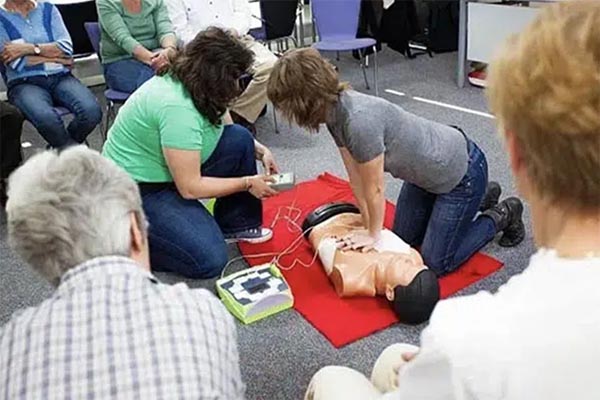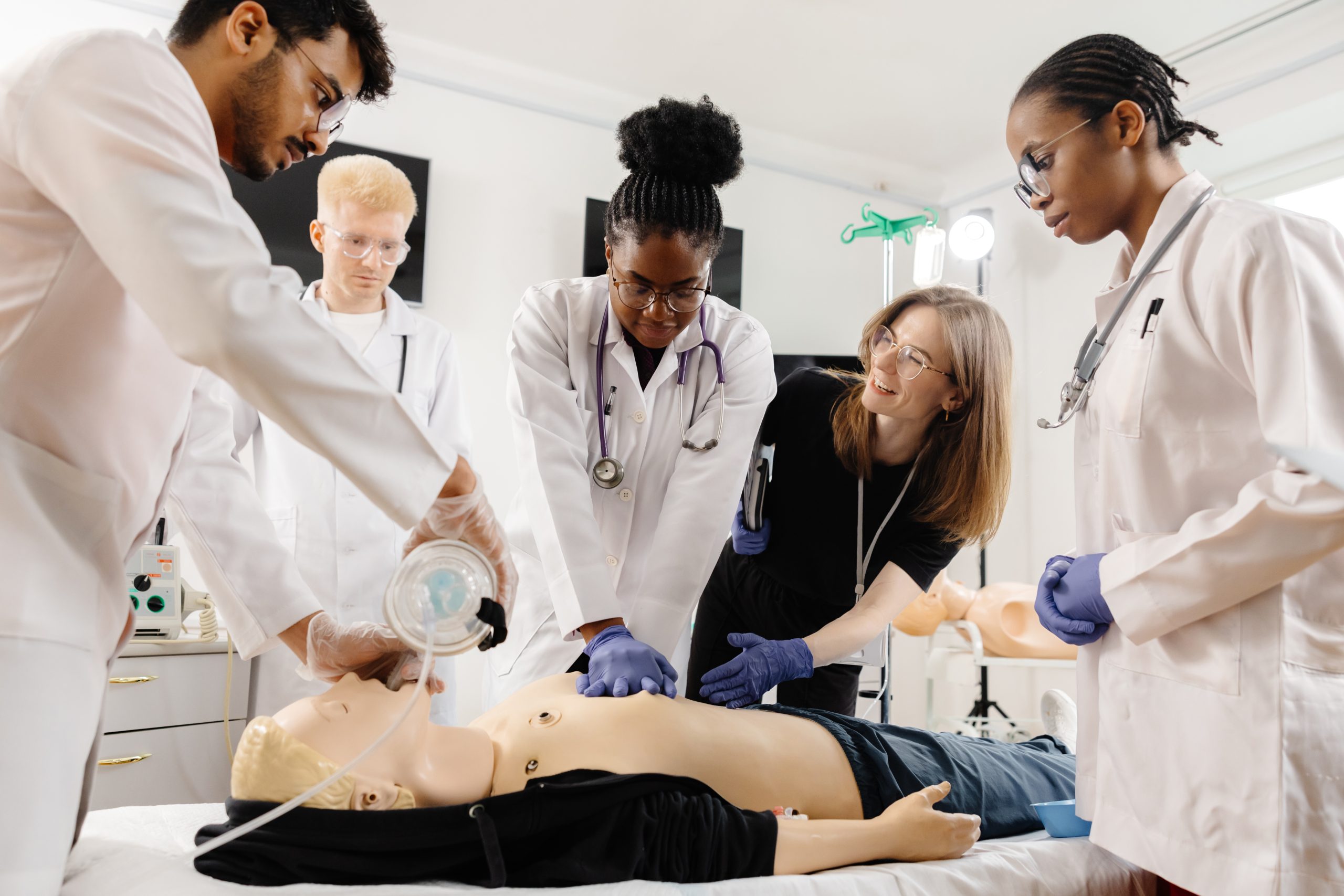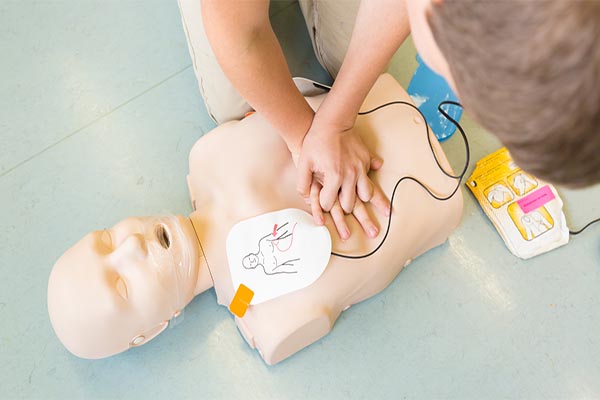
In a world where life-saving skills are more critical than ever, understanding the nuances between different CPR certifications is essential. Whether you’re a healthcare professional, a teacher, a coach, or simply a concerned citizen, knowing which certification to pursue can be the difference between a resume that gets a second look and one that is passed over. It can also be the difference in your confidence and ability to act during a real-life emergency.
While a quick online search might reveal a multitude of CPR certification options, they are not all created equal. The American Heart Association (AHA) Basic Life Support (BLS) certification stands out as the industry’s gold standard. But what makes it so different from other certifications available? This guide will provide a comprehensive breakdown of the key distinctions, helping you make an informed decision about your training. We’ll explore the curriculum, the target audience, the level of recognition, and the overall quality of instruction to show you why the AHA BLS certification is the preferred choice for those who are serious about their life-saving skills.
What is the American Heart Association (AHA) BLS?
The American Heart Association’s Basic Life Support (BLS) certification is a program specifically designed for healthcare professionals and other personnel who need to know how to perform CPR and other basic cardiovascular life support skills in a wide variety of in-facility and pre-hospital settings. It’s not just another CPR course; it’s a rigorous, evidence-based training that has been refined over decades to ensure the highest possible standard of care.
The AHA is a globally recognized authority on cardiovascular health and emergency care. Their guidelines are based on the latest scientific research and are updated regularly to reflect the most effective resuscitation techniques. This means that when you get an AHA BLS certification, you are learning the most current, proven methods for saving a life. This is a critical distinction that separates it from many other, less-regulated certifications.

Key Components of the AHA BLS Curriculum
The AHA BLS curriculum is far more comprehensive than a standard CPR course. It goes beyond the basics to prepare professionals for complex emergency situations.
- High-Quality CPR: The emphasis is on high-quality chest compressions and rescue breaths, which are the most critical factors for survival from cardiac arrest. The training focuses on correct rate, depth, and recoil to maximize blood flow to the brain and vital organs.
- Adult, Child, and Infant CPR: Unlike some certifications that may only focus on one age group, AHA BLS provides in-depth training on the specific techniques required for adults, children, and infants. This versatility is crucial for healthcare professionals who may encounter patients of any age.
- Automated External Defibrillator (AED) Use: The course includes hands-on practice with an AED, a device that can deliver a life-saving electrical shock. Participants learn when and how to use an AED safely and effectively.
- Choking Relief: The curriculum covers techniques for relieving choking in adults, children, and infants, a common emergency that requires specific and immediate action.
- Team Dynamics: A unique and vital aspect of AHA BLS is the focus on team dynamics and effective communication in a multi-rescuer setting. Healthcare professionals often work in teams during an emergency, and this training prepares them to function seamlessly and efficiently.
- Bag-Mask Ventilation: The course also covers the use of bag-mask devices, a critical skill for providing ventilations when an advanced airway is not yet in place.
These components ensure that a certified individual has a robust skill set to manage a wide range of cardiac and respiratory emergencies.
Other CPR Certifications: What You Need to Know
While many other organizations offer CPR certifications, they often differ significantly from the AHA BLS standard. These certifications can range from a quick online-only course to a more traditional in-person class.
The most significant distinction is often the lack of a standardized, evidence-based curriculum. Many of these courses are not regularly updated with the latest scientific guidelines. This can mean that the skills being taught are outdated or not the most effective.
Another major difference is the quality and format of the instruction. Many alternative certifications are entirely online, which may not include any hands-on practice. CPR is a psychomotor skill, meaning it requires physical practice to be performed correctly. Watching a video is no substitute for practicing chest compressions on a manikin with an instructor providing real-time feedback.
Furthermore, the recognition and acceptance of these certifications vary widely. While they may be sufficient for some non-healthcare professions, they are almost never accepted by hospitals, clinics, or other medical facilities for their professional staff.
The Critical Differences: AHA BLS vs. Others
Let’s break down the key differences in a clear and concise manner.
1. Evidence-Based vs. Vague Guidelines
- AHA BLS: Based on the latest scientific evidence from the International Liaison Committee on Resuscitation (ILCOR). The guidelines are updated every five years, ensuring that all certified individuals are practicing the most current and effective life-saving techniques.
- Other Certifications: Often use older, less rigorous, or even proprietary guidelines. The scientific basis for their techniques may be unclear or non-existent, leading to a less effective standard of care.
2. Hands-On vs. Online-Only
- AHA BLS: The gold standard is a blend of online learning (for the cognitive portion) and a mandatory in-person skills session with a certified instructor. This hands-on component is where you practice chest compressions, rescue breaths, and AED use on manikins, receiving vital feedback to perfect your technique.
- Other Certifications: Many are offered entirely online, without any hands-on practice or instructor supervision. This means a person can pass a test but lack the physical skills to perform CPR effectively in a real emergency.
3. Professional Recognition vs. Limited Acceptance
- AHA BLS: Universally recognized and required by virtually all hospitals, clinics, and emergency medical services (EMS) agencies for their professional staff. It is a non-negotiable requirement for many jobs in the healthcare field.
- Other Certifications: Recognition is limited and inconsistent. While they might be accepted by a school for a teacher or a gym for a trainer, they are rarely, if ever, accepted by healthcare employers as a substitute for AHA BLS.
4. Comprehensive vs. Limited Curriculum
- AHA BLS: The curriculum is comprehensive, covering adult, child, and infant CPR, AED use, choking relief, and team dynamics. It is designed for professional rescuers who need to be prepared for any situation.
- Other Certifications: Often offer a basic, limited curriculum that may not cover all age groups or advanced skills like bag-mask ventilation or team communication.
5. Instructor Quality vs. Self-Taught
- AHA BLS: Courses are taught by certified AHA instructors who have undergone extensive training and must maintain their instructor status through continuing education. This ensures a high level of teaching quality and consistency.
- Other Certifications: The instructors, if any, may not have the same level of training or adherence to a standardized curriculum. In online-only courses, there is no instructor to provide feedback or correct errors.

Who Needs an AHA BLS Certification?
The primary audience for AHA BLS certification is healthcare professionals. This includes, but is not limited to:
- Doctors, nurses, and medical assistants
- Paramedics and EMTs
- Dental hygienists and dentists
- Physical and occupational therapists
- Pharmacists
- Medical and nursing students
- Firefighters and law enforcement officers
For these professionals, an AHA BLS certification isn’t just a recommendation; it’s a job requirement. Employers in the healthcare field rely on the AHA’s reputation and rigorous standards to ensure their staff is properly trained to handle life-threatening emergencies.
Conclusion: Making the Right Choice for Your Career
Choosing the right CPR certification is a decision with real-world consequences. While other certifications might seem like a quicker or cheaper option, they often fall short in terms of quality, recognition, and comprehensive training. For anyone in the healthcare field, or aspiring to be, the American Heart Association (AHA) BLS certification is not just a preference, it’s a professional necessity.
It represents the highest standard of care and is a signal to employers, colleagues, and patients that you are committed to maintaining the most effective, evidence-based skills. The hands-on, instructor-led training ensures you have the confidence and competence to act decisively when it matters most. Don’t compromise on your training. Invest in the best.
Ready to take the next step in your career and get certified? Contact CPR Classes Near Me to find a certified AHA BLS course today. Our instructors are ready to provide you with the training and skills you need to be a true lifesaver.
FAQs for AHA BLS and a standard CPR certification
Q: What is the primary difference between AHA BLS and a standard CPR certification?
A: The primary difference lies in the target audience, depth of curriculum, and level of professional recognition. AHA BLS is specifically designed for healthcare professionals, offering a comprehensive, evidence-based curriculum that includes team dynamics and advanced skills like bag-mask ventilation. Standard CPR certifications are generally for lay rescuers and have a more basic curriculum. Furthermore, AHA BLS is the universally accepted standard for all healthcare employers, while other certifications may not be recognized.
Q: Can I get my AHA BLS certification completely online?
A: No, an official AHA BLS certification cannot be obtained entirely online. The AHA requires a blended learning approach. This involves a cognitive portion completed online, which covers the theoretical knowledge, and a mandatory in-person skills session. During this hands-on session, a certified AHA instructor will observe and evaluate your ability to perform CPR, use an AED, and practice other life-saving techniques on a manikin. This hands-on component is critical for ensuring you have the practical skills to respond effectively in an emergency.
Q: How long is an AHA BLS certification valid?
A: An American Heart Association (AHA) BLS certification is valid for two years. After two years, you must take a renewal course to keep your certification current. The renewal course is typically a shorter version of the initial course, designed to review and refresh your skills and update you on any changes to the AHA’s resuscitation guidelines. This ensures that certified individuals are always up-to-date with the latest, most effective techniques.
Q: Do all hospitals and healthcare facilities require AHA BLS certification?
A: Yes, the vast majority of hospitals, clinics, and other healthcare facilities in the United States and globally require their professional staff to have a current AHA BLS certification. It is considered the minimum standard of care. Employers trust the AHA’s rigorous, evidence-based guidelines and instructor-led training to ensure their employees are competent and confident in performing life-saving skills. Holding an AHA BLS certification is often a non-negotiable prerequisite for employment in a healthcare setting.
Q: Why is hands-on practice so important for CPR?
A: Hands-on practice is crucial for CPR because it is a psychomotor skill. This means it involves physical movements and muscle memory that cannot be learned by simply watching a video or reading a book. Practicing with an instructor and a manikin allows you to perfect your chest compression depth and rate, ensure a proper seal for rescue breaths, and gain confidence in using an AED. This real-time feedback is vital for correcting errors and building the muscle memory needed to perform CPR correctly and effectively under the stress of an actual emergency.

Leave a Reply